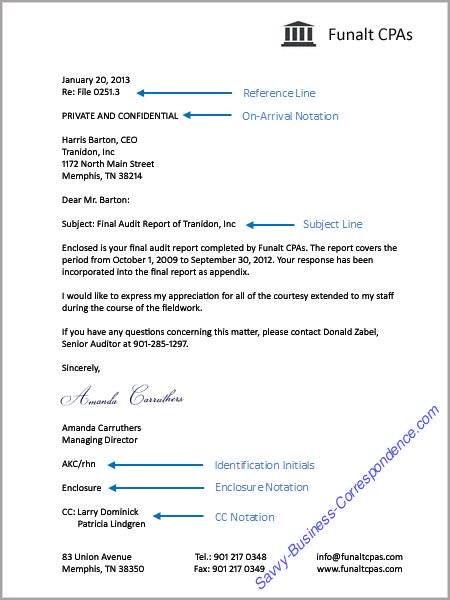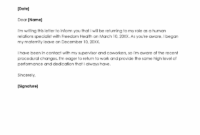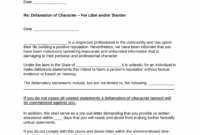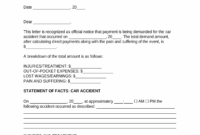Even in our fast-paced digital world, the formal business letter continues to hold significant weight. It’s a powerful tool for official communication, whether you’re making an important announcement, submitting a formal request, or conveying critical information that requires a documented paper trail. A well-structured business letter reflects professionalism and ensures your message is taken seriously, providing clarity and an undeniable record of your communication.
But what happens when your message needs to reach not just the primary recipient, but also a few other key individuals who need to be kept in the loop? That’s where understanding how to effectively use a business letter template with cc comes into play. It’s about ensuring transparency and comprehensive information sharing, making sure everyone who needs to know, knows, without directly addressing them as the main party.
Understanding the “CC” in Business Letters and Why It’s Crucial
The “CC” in business letters, which stands for “Carbon Copy,” is a legacy term from the days of typewriters and physical carbon paper used to create duplicates. In today’s digital age, it has evolved to mean “Courtesy Copy” or “Circulated Copy,” signifying that the individuals listed in this section are receiving a copy of the letter for their information, but they are not the primary addressees or expected to take direct action based on the letter. They are simply being kept informed.
Its importance cannot be overstated in modern professional communication. Using the CC line effectively helps maintain transparency, ensures that relevant stakeholders are aware of ongoing discussions or decisions, and can even prevent miscommunication or redundant efforts. For instance, if you are sending a letter to a client regarding a project, you might CC your project manager so they are up-to-date on the client communication. This keeps everyone aligned and informed without requiring the project manager to be directly involved in every step of the primary communication.
Knowing when to use CC is a strategic decision. You might CC a supervisor on a performance review letter sent to an employee, or include a legal department on correspondence that might have contractual implications. It’s also useful when informing team members about changes to policy that affect them, even if the primary letter is addressed to a specific department head. The key is to ensure the CC recipients genuinely need to be informed and that their inclusion enhances communication rather than creating unnecessary noise.

However, it’s equally important to use the CC function judiciously. Over-CCing can lead to information overload, where recipients start to ignore messages because too many are sent unnecessarily. Always ask yourself if the person truly needs to see this specific communication for informational purposes. Respecting privacy and relevance ensures that your CC usage is seen as helpful and professional, not as a way to avoid direct communication or to push responsibility onto others.
Best Practices for Using CC
- Clarity: Clearly state who the primary recipient is and who is being CC’d.
- Relevance: Only CC individuals who genuinely need to be aware of the communication.
- Privacy: Be mindful of sensitive information; not everyone needs to see every detail.
- Professionalism: Use CC to inform, not to avoid direct communication or assign blame.
Crafting Your Effective Business Letter Template With CC
Developing a reliable business letter template is an invaluable asset for any professional. It ensures consistency, saves time, and projects a polished image. When incorporating the CC function, the goal is to integrate it seamlessly into your standard format, making sure it’s clear, concise, and professional. A strong template typically includes your contact information, the date, the recipient’s contact information, a clear salutation, the body of the letter, a professional closing, your signature, and finally, any enclosures and the CC line.
The placement of the “CC” line is typically at the very end of the letter, after your signature and any enclosure notations. This makes it clear that these individuals are receiving a copy for informational purposes. The format is usually “cc:” followed by the name(s) of the person or people being copied, each on a separate line if there are multiple individuals. For example, “cc: John Doe, Project Manager” or if multiple, “cc: Jane Smith, Director; Bob Johnson, Legal Counsel.” This placement and formatting are widely recognized and ensure your intent is understood.
When constructing the body of your letter for a business letter template with cc, maintain a formal yet conversational tone, keeping your audience in mind. Start with a clear introduction stating the purpose of the letter, followed by paragraphs that elaborate on the details, providing any necessary background or supporting information. Conclude with a clear call to action or a summary of expectations, reinforcing the message for both the primary recipient and those CC’d. The clarity of your message is paramount, as all recipients will be reviewing it.
Ensure your template is adaptable to various situations, allowing you to easily plug in different addresses, dates, and specific content while maintaining the core structure. Paying attention to details like proper grammar, spelling, and consistent formatting will significantly enhance the perceived professionalism of your communication. A well-designed template serves as a robust framework, allowing you to focus on the content of your message rather than the structural elements each time you write a formal letter.
Essential Components of a Business Letter Template
- Sender’s Contact Information: Your name, title, organization, address, phone, and email.
- Date: The date the letter is written.
- Recipient’s Contact Information: The primary recipient’s name, title, organization, and address.
- Salutation: A formal greeting (e.g., “Dear Mr. Smith,”).
- Subject Line: A concise summary of the letter’s content (optional but recommended).
- Body Paragraphs: Introduction, detailed explanation, and call to action/conclusion.
- Closing: A formal closing (e.g., “Sincerely,”).
- Signature: Your handwritten signature, followed by your typed name and title.
- Enclosures: A notation if additional documents are attached (e.g., “Enclosures: Report A, Invoice 123”).
- CC Line: “cc:” followed by the names and/or titles of individuals receiving a courtesy copy.
Mastering the art of formal communication, especially with the strategic use of a business letter template, is a hallmark of professionalism. It’s about more than just sending a message; it’s about crafting a clear, documented, and officially recognized record of your interactions. By consistently employing a well-structured template, you streamline your workflow and ensure every piece of communication adheres to high standards of clarity and completeness.
Utilizing the CC function within your templates further refines this process, turning a simple letter into a comprehensive information-sharing tool. This ensures that all relevant parties are not only informed but also operate from the same understanding, fostering better collaboration and accountability. Investing time in perfecting your approach to business letters, complete with appropriate CC usage, is an investment in your professional image and effective organizational communication.



